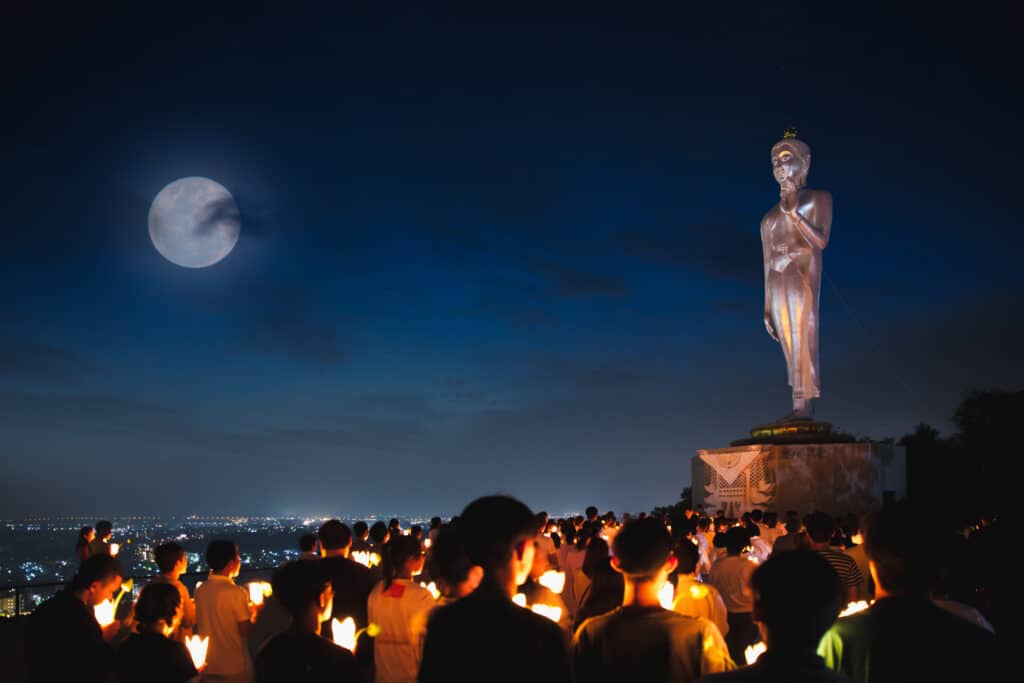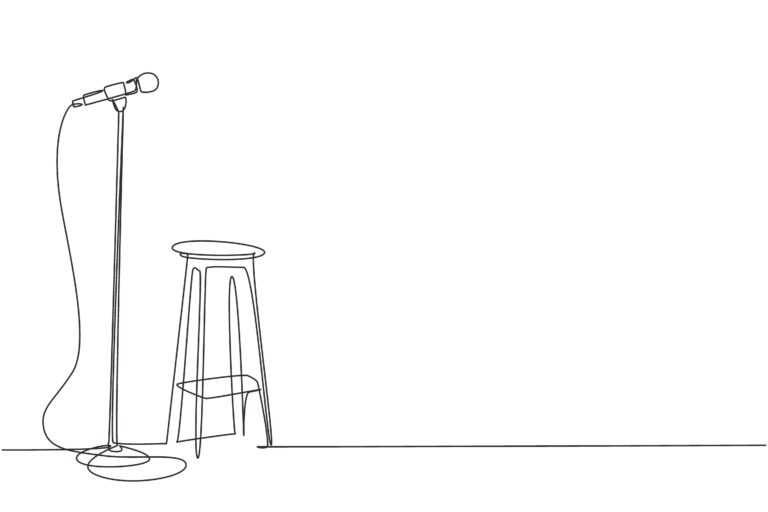When people spent time with Jesus, how was he able to help them? When people interacted with the Buddha, in what ways did the interaction benefit them? In this article, we will contrast the outcome of spending time with these two founders. One quick answer is that the eventual results of these interactions were heaven and nirvana, respectively. But what was the actual substance of these interactions; what was being accomplished in them?
Let us reflect on three stories about grieving women, the first two of which would go on to become esteemed nuns.[1]
Interacting with the Buddha
Kisa Gotami was a poor woman whose in-laws treated her as beneath them until she bore a son. One tragic day, however, her young son was outside playing when he suddenly died. Kisa’s grief drove her mad. Though the child was clearly dead, she picked up the corpse and went door-to-door asking for medicine to treat him. “What good is medicine?” they would explain, but she did not understand.[2]
Taking pity on her, someone finally told her about the Buddha residing nearby. He explained that Kisa could ask the Buddha for medicine. So she hurried to find the Buddha, and here is what he told her: “Go, having entered the city, into whatever house has never before experienced any death, and take from them a mustard seed.” With renewed hope, she again went house-to-house asking for the special seed. Yet her optimism diminished with each visit as each person informed her the house had been visited by death multiple times. Suddenly, she discovered the Buddha’s “medicine.” She exclaimed, “This indeed is what is true—impermanence.”
Still carrying the corpse, she went that very moment to the charnel ground, left the corpse there, and returned to the Buddha. He explained what she had already discovered:
“A person with a mind that clings,
Deranged, to sons or possessions,
Is swept away by death that comes
Like a mighty flood to sleeping town.”[3]
The problem, as it turns out, was not the death of a son, but the clinging to that son which had made grief inevitable. That day, Kisa joined the community of nuns, and it would not be long before she attained arhathood (enlightenment).
“The problem, as it turns out, was not the death of a son, but the clinging to that son which had made grief inevitable.”
Patacara too was a woman acquainted with grief. Along with her husband and son, she was on her way to deliver her second baby at her parents’ house when they were caught in a storm. She gave birth on the road, and her husband went to gather grass and sticks to construct a shelter for the family. When he did not return even the next morning, Patacara took her two children to look for him. They found him dead from a snakebite. The widow decided it was best to go ahead and complete the trip to her parents’ house.
The previous night’s storms had caused the river to swell. So, to cross, she thought it best to carry the infant across first. She left the baby on the far side of the bank and turned to fetch her firstborn. However, as she was crossing, she looked back to see a hawk swoop down and snatch her baby and carry him off. In her alarm, she raised her arms, which her eldest took to be a signal to go ahead and cross. Jumping in, the firstborn too was carried away, this time by the current. She arrived at her parents’ house grief-stricken and alone, when she discovered the house burnt to the ground, struck by lightning in the previous storm.[4]
Driven mad and wandering naked, she became a nuisance driven away by everybody.[5] One day, however, she met the Buddha, and he told her,
“Miserable woman, your kin all dead
And limitless dukkha you’ve known.
So many tears have you shed
In these many thousands of births.”[6]
“So many tears have you shed, in these many thousands of births.”
The Buddha helped Patacara realize the universality of death and that the only way to not feel its sting would be through accepting its inevitability and seeking nirvana, the “Deathless.” She reflected later that she had witnessed in “the charnel ground, the muscles of sons being chewed. With family killed, despised by all, my husband dead, I reached the Deathless. I’ve developed this path, noble, eightfold, going to the Deathless.”[7] Later, when Mara, the tempter, would remind her of her loss, she would tell him, “I’ve gotten past the killing of sons. . . . I don’t grieve, I don’t weep—and I’m not afraid of you. . . . Having defeated the army of death, free of fermentations I dwell.”[8]
Interacting with Jesus
In a town called Nain, about six miles from Jesus’ hometown of Nazareth, a funeral procession was just exiting the city gate when Jesus and his disciples arrived to the town. In the coffin was a corpse of a man whose mother was weeping in the procession. This was her only son, and her husband had died. So not only was she grieving the loss of her son, but in the background was the nagging reality that she had lost her provider and her family line was ended.[9]
According to Luke 7:13 (ESV), “When the Lord saw her, he had compassion on her and said to her, ‘Do not weep.’” Up to this moment, the story could have well been told about Gautama, with the compassion and exhortation not to grieve. Yet Jesus took the woman’s rehabilitation an enormous extra step. After touching the coffin so that the pallbearers would halt, he spoke to the corpse, “Young man, I say to you, arise” (Luke 7:14, ESV). Life reanimated the corpse, he sat up, and the crowd began to tell each other, “God has visited his people!” (Luke 7:16, ESV).
“Life reanimated the corpse, he sat up, and the crowd began to tell each other, ‘God has visited his people!'”
Renunciation/Release VS Restoration
The result of interaction could not be more different. Kisa had exclaimed to the Buddha, “You have indeed restored me.”[10] But this seems inaccurate. Nothing was restored, in the sense of remade as it was intended to be. Rather, the Buddha had taught her to accept death. It was Jesus who restored the dead to life. In his insistence on quelling attachments and hatreds, Gautama gave Kisa renunciation and release, a way out.
The examples of Kisa Gotami and Patacara are indeed poignant, yet they exemplify the core of the Buddha’s message to everybody, articulated by Kisa: “This indeed is what is true—impermanence.”[11] Gautama used the same formula for a leper; he taught the leper about suffering’s cessation through the Dharma, but did nothing to restore his health.[12]
Jesus, however, effected restoration, not just of the dead (Mark 5:35-43; Luke 7:11-15; John 11:1-44), but of the leper’s skin (Mark 1:40-42), paralyzed limbs (Mark 2:3-12), blind eyes (Mark 10:46-52), and deaf ears (Mark 7:31-37). These were all previews of the glorious restoration to come when Jesus returns:
“He will wipe away every tear from their eyes, and death shall be no more, neither shall there be mourning, nor crying, nor pain anymore, for the former things have passed away.” (Revelation 21:4, ESV)
That is, Gautama and Jesus have different methods of drying eyes: one through teaching resignation, the other through restoration. And what Jesus did to restore the physically broken makes visual what he promised to do on the inside, as predicted by the prophet Ezekiel: “I will give you a new heart, and a new spirit I will put within you. And I will remove the heart of stone from your flesh and give you a heart of flesh” (Ezekiel 36:26, ESV).
“He will wipe away every tear from their eyes, and death shall be no more, neither shall there be mourning, nor crying, nor pain anymore, for the former things have passed away.”
How Does This Contrast Matter to Our Lives Today?
How does this contrast between the results effected by Gautama and Jesus matter to our everyday lives today, especially as it relates to this-worldly suffering? First, here is the contrast in a single sentence: Gautama released his disciples from suffering’s disturbance, while Jesus restored his disciples through suffering’s reversal.
Perhaps Gautama was able to effect for his patients great psychological comfort through teaching them the inevitability of suffering and thus the preventability of attachment. But, since we are asking which result better combats this-worldly suffering, Jesus’ actual reversal of the situation clearly offers more to combat suffering than Gautama’s proposed resignation. Gautama’s alleviation of Kisa Gotami’s and Patacara’s grief through acquiescence is hardly comparable to the joy Jesus brought the widow at Nain.
“Gautama released his disciples from suffering’s disturbance, while Jesus restored his disciples through suffering’s reversal.”
Yet, the Buddhist might wonder, would not Jesus’ restorations only set their recipients up for greater disappointment when, for example, death strikes again? But, again, Jesus was restoring what was broken physically to prove that he could restore spiritual brokenness, with the ultimate result of “making all things new” (Revelation 21:5). So, whether at the temporal level of reversing particular sufferings, or at the ultimate level of undoing suffering itself, Jesus combats suffering more effectively than Gautama who effects resignation at the temporal level and release at the ultimate level. Nothing is restored by Gautama. Instead of the person restored, it is suffering that is left intact because suffering is merely left, not combatted.
[1] The story of the dead child is uncontroversially applied to Kisa Gotami, but certain sources ascribe the story of the dead family to her as well, where other sources say the woman with the dead family was Patacara. The commentary says this second story was about Patacara, while the canon attributes it to Kisa Gotami (Thig 10, Kisagotami Theri, Thanissaro’s Introduction). Here, for simplicity’s sake, we will proceed as if the first story is about Kisa Gotami and the second is about Patacara.
[2] Andrew Olendzki, “Skinny Gotami and the Mustard Seed (Commentary to Thig 10.1),” Access to Insight, 2005, https://www.accesstoinsight.org/noncanon/comy/thiga-10-01-ao0.html.
[3] Andrew Olendzki, “Skinny Gotami and the Mustard Seed (Commentary to Thig 10.1).”
[4] See Translator’s Introduction in “Kisagotami Theri (Thig 10),” translated from the Pali by Thanissaro Bhikkhu, Access to Insight, 2006, https://www.accesstoinsight.org/tipitaka/kn/thig/thig.10.01.than.html.
[5] Robert E. Buswell and Donald S. Lopez, The Princeton Dictionary of Buddhism, 634.
[6] “Kisagotami Theri: The Woman with the Dead Child (Thig 10),” translated from the Pali by Hellmuth Hecker and Sister Khema, Access to Insight, 1998, https://www.accesstoinsight.org/tipitaka/kn/thig/thig.10.01.hekh.html.
[7] “Kisagotami Theri (Thig 10),” 2006.
[8] “Gotami Sutta: Sister Gotami (SN 5.3),” translated from the Pali by Thanissaro Bhikkhu, Access to Insight, 1998, https://www.accesstoinsight.org/tipitaka/sn/sn05/sn05.003.than.html.
[9] Leon Morris, Luke: An Introduction and Commentary, Tyndale New Testament Commentaries (Nottingham: Inter-Varsity Press, 1988), 159.
[10] Andrew Olendzki, “Skinny Gotami and the Mustard Seed (Commentary to Thig 10.1).”
[11] Andrew Olendzki, “Skinny Gotami and the Mustard Seed (Commentary to Thig 10.1).”
[12] “Kuṭṭhi Sutta: The Leper (Ud 5.3)” translated from the Pali by Thanissaro Bhikkhu, Access to Insight, 2012, https://www.accesstoinsight.org/tipitaka/kn/ud/ud.5.03.than.html.
Excerpted from Daniel McCoy, Buddhism or Christianity: Which Is Better for the World (Moral Apologetics Press, 2021).











2 Responses
As I read this story I wondered how you would deal with the second death of the widows son. Well done. The Buddha offers detachment from suffering and reality. I have never found that helpful. When I was lost I needed hope and detachment from reality and suffering is false hope. Jesus offers real hope of life today without detachment from reality and hope with life in the hereafter. I will take Jesus forever.
“I will take Jesus forever.” Amen! Thanks for the encouragement.